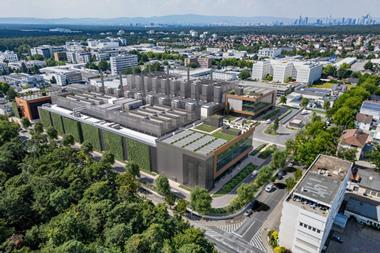ESG experts from two of the Nordic region’s biggest pension funds told a conference today why setting net-zero greenhouse gas emissions targets presented no conflict with their fiduciary duty to aim for the best financial returns from investments.
In a discussion session at the IPE Real Assets & Infrastructure Global Investor Conference 2021 on whether investors and fund managers should set net-zero targets for their portfolios, Lars Erik Mangset, chief adviser climate change at Norway’s KLP, said there several drivers behind KLP’s decision to set climate targets.
“From a more societal, market perspective, I think there is an increased recognition among private-sector players that it’s also the responsibility of the private sector to contribute to the goals in the Paris Agreement,” he said.
There was a stakeholder perspective too, he told the virtual event.
“But I think also for us, being a mutual pension fund, being owned by the municipalities, there is a clear expectation from our owners over several decades to increase our focus on responsible investment,” Mangset said.
KLP has set a longer-term target of net-zero carbon emissions from its investment portfolio by 2050, and is seeking to align itself to an emissions trajectory that is consistent with the 1.5 degree global warming scenario in the Paris Agreement, he said, adding that the pension fund and also has annual targets.
On the question of how the target-setting squared with KLP’s fiduciary duty, he said the institution’s owners also had the expectation that KLP should not compromise on its primary objective, which was to secure competitive investment management efficient.
KLP had divested from coal and tar sands, and in the last year had also significantly built up its portfolio of renewable energy investments, he said.
“We are not doing this in a philanthropic way - we are doing this in a way where we can achieve our climate targets while at the same time also maintaining our financial targets, and that will also of course be important for us moving forward,” Mangset said.
Jenny Gustafsson, head of responsible investments at Swedish pension fund AMF, said: “On fiduciary duty, I would say it is part of our duty to see how we can invest in this transition because it’s not an isolated event, it’s not a trend.
“It’s structural change, and for us, it’s important that we invest in this transition in a way that benefits our customers and our owners.”
Explaining AMF’s attitude to stakeholders regarding its net-zero ambitions, Gustafsson said the pension fund had told the companies it invests in that they should set targets and live with them – and that as asset owners, it was important for AMF to follow suit.
“I think it’s also a way to ensure we have aligned interests with our customers and other stakeholders,” she said.
Before setting targets, it was important for entities to ask how they would achieve this – whether it was through divestment, engagement, or whether they would just wait for structural change to see what would happen.
“And I think it’s also important to have these discussions internally at board level to make sure you have thought something through, and of course how you’re going to monitor this, if it’s full portfolio, and what role different assets will play,” she said.
There was major role to be played by real assets in this, said Gustafsson.
Making a presentation at the start of the conference session, Peter Bachmann, managing director, sustainable infrastructure, at alternatives asset manager Gresham House, predicted sustainable infrastructure would follow the same path of yield compression that had been seen in infrastructure investments over the last 20 years, and in renewables over the last decade.
“I am more certain than of anything before that we will see the same yield compression in sustainable infrastructure.
“This is why to us, the sustainability thematic generally is the single biggest opportunity of our lifetime,” he said.
Meanwhile, Erik Landry, climate change specialist at real estate data firm GRESB, said in the discussion that the various types of investment approach that had been described by panellists showed that for investors, getting to net-zero was a matter of doing everything possible at this stage.
“We don’t really see how we’re going to get to net-zero in the long-term, but it’s important to start tackling everything we can in the short term - because some of those will pan out and become the solutions that will definitely be needed over time,” he said.
To read the digital edition of the latest IPE Real Assets magazine click here.















